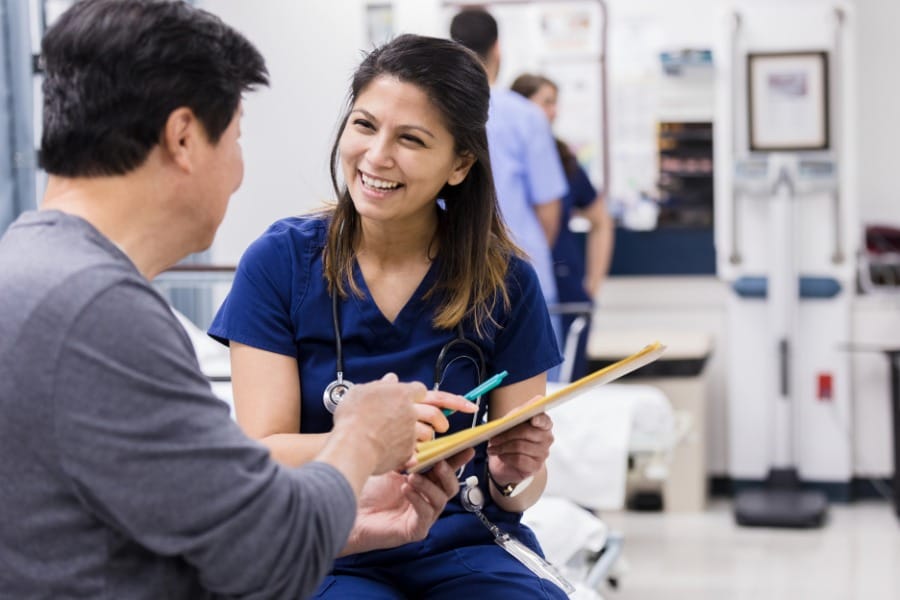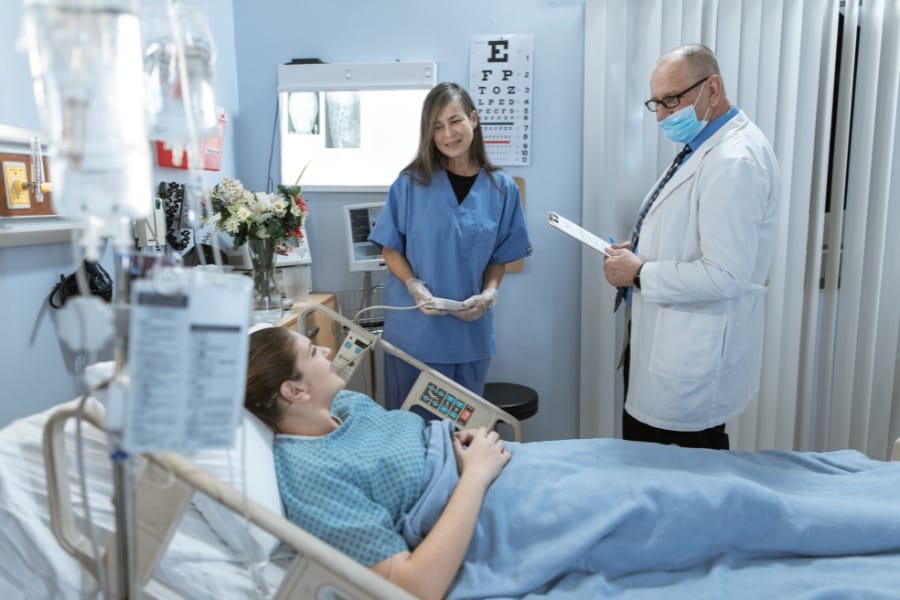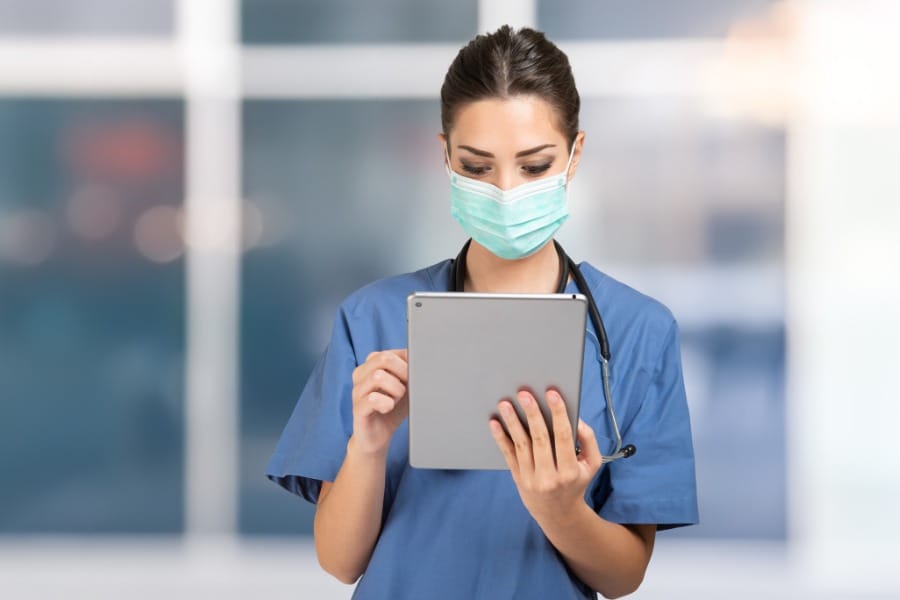Technology in Enhancing Nurse Safety
The nursing profession is as old as time itself, and while the world has certainly changed, caretakers’ intrinsic desire to help people in need is the same.
However, that doesn’t mean the impact of their work can’t become greater. Healthcare organizations today are privy to the near-limitless possibilities of modern technology.
It’s transforming everything – from patient care procedures to administrative tasks. But perhaps the most significant impact is being felt in the realm of nurse safety.
Technology is revolutionizing how healthcare organizations approach workplace safety, offering innovative solutions to long-standing challenges.
In this article, we’ll examine the intersection of nursing and technology in the healthcare industry, where tradition meets innovation in the pursuit of safer, more effective healthcare delivery.
Key Takeaways:
- Technology is revolutionizing nurse safety in healthcare settings, addressing the high rates of workplace violence and hazards
- Key safety technologies include RTLS, wearable panic buttons, IoT monitoring, video surveillance, and access control systems
- Implementation challenges exist (costs, training, integration), but benefits often outweigh initial hurdles
- Future innovations in AI, VR, robotics, and smart PPE are expected to further enhance nurse safety and improve healthcare delivery
The Technologies Enhancing Nurse Safety Today

The advent of the computer a generation ago transformed the world as people knew it at the time. Now, a new wave of innovation is redefining the status quo, with the potential to make work both more efficient and safe.
While patient safety and careful patient outcomes have been a major focus in clinical settings, nurse safety cannot be overlooked.
Hospitals and healthcare facilities of all kinds are progressively deploying cutting-edge technologies to enhance nurse safety—a critical concern, especially given that workplace violence in healthcare is five times higher than in other industries.
Here are just a few examples:
Real-time Location Systems (RTLS)
RTLS are nursing technologies that automatically identify and track the location of objects or people in real-time, usually within a building or other contained area.
In healthcare settings, RTLS can be used to locate medical equipment, monitor patient movement, and enhance staff safety by providing their exact location during emergencies.
Wearable Panic Buttons
Wearable panic buttons are small, portable devices that medical professionals can carry or wear. When activated, these buttons send an immediate alert to security personnel or other staff members, indicating that the wearer needs urgent assistance.
This technology provides a quick and discreet way for nurses to call for help in dangerous situations.
IoT-Enabled Environmental Monitoring
Internet of Things (IoT)-enabled environmental monitoring uses connected sensors to continuously track and report on various environmental factors in healthcare facilities.
These systems can monitor air quality, temperature, humidity, and other parameters crucial for maintaining a safe and healthy environment for both patients and staff.
Video Surveillance
Video surveillance systems in healthcare settings use cameras to monitor various areas of a facility.
These systems enhance security by allowing real-time observation of activities and recording footage for later review if needed. Advanced systems may include features like motion detection or facial recognition to improve safety and security measures.
Access Control
Access control systems in healthcare environments manage and restrict entry to specific areas within a facility using electronic locks, key cards, or biometric scanners.
They ensure that only authorized personnel can enter sensitive areas, and in doing so, protect patients, staff, and valuable medical equipment and pharmaceuticals.
Enhanced Communications Via Bluetooth Low Energy (BLE)
Bluetooth Low Energy (BLE) is a wireless communication technology that enables short-range communication between devices with minimal power consumption.
In healthcare settings, BLE can be used to enhance communication by enabling the connection of various devices and sensors.
This technology can support features like indoor navigation, asset tracking, and proximity-based notifications, improving overall efficiency and safety in hospitals and clinics.
What Can Be Gained By Using Technology in Nursing?

The advantages of technology in nursing are akin to those of using technology in any other line of work.
Smart software, hardware, and connected systems have a knack for making things more efficient across the board. In healthcare settings specifically, technology is making a big impact on staff retention.
Studies draw a clear connection between workplace safety and job satisfaction. Nursing is considered high-risk for employees – and turnover – in particular due to its fast-paced, intensive nature.
According to the U.S. Occupational Safety & Health Administration (OSHA), “a hospital is one of the most hazardous places to work” in America. The Bureau of Labor Statistics further states that healthcare workers accounted for 73 percent of the country’s violence-caused nonfatal workplace injuries and illnesses in 2018.
We know what the problem is, and that’s a lack of safety measures and protocols in healthcare settings. Technology is stepping in to fill this gap, providing innovative solutions to protect nurses and other healthcare workers.
The integration of safety-focused technology in healthcare is a win-win situation, addressing critical workplace issues while simultaneously improving the quality of care provided.
The Challenges That Lie Ahead
Change any part of a long-standing way of doing things and you’re bound to run into a few roadblocks.
Technology is notorious for being finicky by nature, especially new technology.
That opens the door for hiccups during the implementation process and also potentially down the road with long-term use as well. See a list of some of the biggest hurdles below.
High initial costs: Advanced safety technologies often require significant upfront investment.
Training requirements: Staff need time to learn and adapt to new systems, which can temporarily disrupt workflows.
Technical issues: Glitches, software bugs, or hardware malfunctions can occur, potentially compromising safety if not addressed promptly.
Integration with existing systems: New tech must work seamlessly with current infrastructure, which isn’t always straightforward.
Privacy concerns: Implementing certain technologies, like video surveillance, may raise patient and staff privacy issues.
Resistance to change: Some staff members may be hesitant to adopt new technologies and instead prefer the tools and methods with which they’re already familiar.
Maintenance and updates: Ongoing tech support and regular updates are necessary, adding to long-term costs and complexity.
Despite these challenges, the benefits of improved safety and efficiency often outweigh the initial hurdles.
It’s simply up to individual organizations to decide they’re ready to take the leap of investing in new technology themselves.
Empowering Future Changes in Nursing Through Technology

The exciting thing about nursing and technology is that, as impressive as things are today, there’s no telling what tomorrow will bring.
Professionals in the field two decades ago wouldn’t have been able to imagine the advancements to come. Looking forward, we should adopt a mindset that welcomes the notion that anything is possible.
Look no further than improvements in safety for proof. In a matter of years, the field has witnessed a remarkable transformation in nurse safety protocols.
From basic personal protective equipment to sophisticated real-time tracking systems, the evolution has been rapid and impactful.
According to data from MarketsandMarkets, the nurse call systems space alone is poised to reach $4.0 billion in value by the year 2029.
With more investment comes more innovation and development, particularly in the areas of Artificial Intelligence (AI), Virtual Reality (VR), advanced robotics, smart personal protective equipment (PPE), automation, and remote patient monitoring systems.
Nurse Safety is Critical and Ever Changing
Everyone has a stake in nurse safety.
Those who work long shifts on the front lines of society’s healthcare needs deserve the best protection available. When they’re taken care of, we’re all healthier, safer, and happier over the long term.
Put Yourself in a Great Nursing Position
Do you want to benefit from the ultimate work-life balance and flexibility?
Being a per diem nurse with NurseRegistry is a great fit for you. What are the benefits?
At NurseRegistry you get to:
- Create your own schedule
- Set your own rates
- Pick your job placements
- Benefit from a dedicated and personable support team
Click below to discover more ways that NurseRegistry could supplement your nursing career today.
The post Technology in Enhancing Nurse Safety appeared first on NurseRegistry.The post Technology in Enhancing Nurse Safety appeared first on NurseRegistry.
from NurseRegistry https://ift.tt/7gkHuJR

Comments
Post a Comment